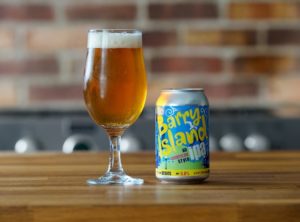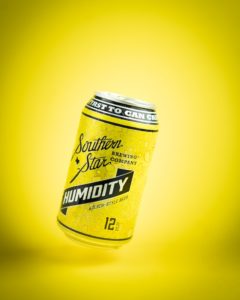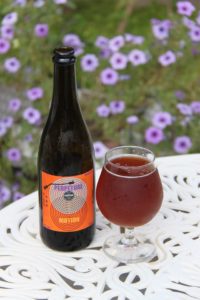Spring is a special time of year. In areas of the world that experience all four seasons, saying goodbye to the cold winter months is a welcoming event. Days experience more sunshine, temperatures begin warming up, and plants/flowers begin new life once again.
For homebrewers, however, spring is the time to start thinking about beer styles that offer something light and refreshing. While you don’t have to put a screeching halt to your winter warmers just yet, adding some spring beer styles to your upcoming brew days will put you in the perfect position to welcome the warmer months ahead!
Our Favorite Spring Beer Styles
The most popular spring beer styles are those that are light, refreshing, and easy to drink. While many of these styles are often available year-round, many homebrewers and craft beer aficionados alike have tastes that change by the season. As it gets colder, it’s common to want to brew beers that are higher in ABV and full-bodied.
For example, one of the most common seasonal beers is the elusive Oktoberfest (Marzen), which is typically released in the fall and why many homebrewers have it on tap around that time.
That’s what makes seasonality in homebrewing special. It gives you something to look forward to as the seasons change, and spring is no exception.
If you’re ready to jump into the next season and are feeling thirsty for something that will surely leave you satisfied, you’re in the right place.
With all that said, let’s get you prepared for a spring full of brewing some of the top spring beer styles.
1) Helles

A classic German style, Helles is an exceptional choice for the warmer days ahead. It’s typically made from Munich malt, giving it a beautiful golden hue. The Munich malt base gives it a well-rounded flavor, with a smooth and somewhat grainy-sweet malt finish that’s soft and slightly dry.
As far as hops go, your typical noble hops give this beer an herbal/floral flavor with bitterness that is restrained enough so that you know it’s there, allowing the malt to really shine through.
The most common style out there according to the latest BJCP guidelines:
- Munich Helles (BJCP Category 4a)
Common examples have an alcohol volume that ranges anywhere from 4.7% to 5.4%, making the Helles an excellent day drinker that’s light enough to enjoy a couple while working outside or firing up the grill.
Brewing a Helles is also fairly simple. In its simplest form, a base of Munich malt, a light dose of noble German hops, and a clean fermenting yeast (such as WY2308 Munich Lager) are all you need.
2) Pilsner

Yet another classic spring beer style is the Pilsner. Similar to Helles, a Pilsner is a year-round brew that is great for any occasion, however, it fits the bill as the warmer months of spring begin to make landfall.
Pilsners are often light-bodied and highly attenuating, giving them a smooth, dry finish. Just because it’s lightweight, however, doesn’t mean it skimps on flavor. Made with a base of Pilsner malt, the overall flavor profile is crisp and slightly sweet. Hops with a floral flavor/aroma are typically favored here (such as Hallertau, Tettnang, and Saaz).
Speaking of hops, one of the best things about brewing a Pilsner is that there are no rules. While the typical IBU for a Pilsner is roughly 22-40, new-age Pilsners can be as hoppy as you want them to be, which can make brewing this style incredibly fun and versatile!
According to the BJCP, here is the most common style guideline:
- German Pils (BJCP Category 5D)
Yet another great example of a beer light in alcohol and full of flavor, Pilsners generally fall into the ABV range of 4.4% to 5.2%. That makes it the perfect go-to beer when the sun is shining and the temps are rising!
Similar to Helles, brewing a Pilsner can be relatively simple. You can keep things easy by utilizing a base of Pilsner malt, adding German noble hops, and using a clean, high-attenuating yeast (such as WY2007 Pilsen Yeast). As long as your fermentation temperatures are in check, you’ll end up with a clean and easy-to-drink beer.
Remember: you can keep things classic and stick with German noble hops, but don’t be afraid to utilize new world hops (such as Galaxy, Motueka, or Nelson Sauvin) to change things up!
3) IPA

While we know that an IPA is yet another year-round beer that is one of the most sought-after and popular beer styles, it doesn’t make it any less of a candidate for one of the best spring beer styles.
One of our favorite styles to brew, an IPA is versatile with possibilities that are endless. It’s a style that you can truly get creative with, giving you a canvas that allows you to combine a variety of hop combinations to create exceptional beers with an array of flavors that fit your palette.
In its most basic form, an IPA is a moderately strong beer that is decidedly hop-forward and bitter. The malt takes a backseat here, playing more of a supportive role to let the hops shine in both flavor and aroma.
For some background, here are some of the style guidelines for IPAs perfect for spring:
- American IPA (BJCP Category 21A)
- Specialty IPA – Red IPA (BJCP Category 21B)
- Specialty IPA – Belgian IPA (BJCP Category 21B)
Typical alcohol volume ranges anywhere from 5.5% to 7.5%, which makes the IPA a perfect segway into spring. It’s still heavy enough to appreciate, yet can be light enough that it makes the perfect companion for any outdoor activities.
When considering brewing an IPA, think about what flavor profile you’re going for. The sky is the limit here, as you can keep it classic using the “old school” American hop combos such as Cascade, Centennial, Comet, or Columbus or take advantage of newer age hops such as Mosaic, Galaxy, Citra, and Sabro to make something that is truly an adventure with each sip!
As for your malt bill, you can also keep this fairly simple. Most of the IPAs we brew use a clean base malt, such as Pilsner with a bit of Caramel 20L for color and Carapils for head retention. For IPAs that require a bit more of a malt backbone, such as a Red IPA, Munich malt would make an excellent choice.
Finally, yeast with a clean flavor profile such as WY1056 American Ale is a trusted choice here. It ferments and attenuates well, showcasing the full hop profile and giving you a beer you can truly be proud of (though it might not last too long).
4) Kolsch

If you haven’t sensed a theme here, there’s a reason why so many German classics are great spring beer styles. Kolsch is no exception. It’s light and crisp with a subtle hop character that makes it easy to drink.
A Kolsch often has a fruity character, which is a byproduct from the yeast used to brew this style. Similar to a Helles, a Kolsch is more malt-forward with the hops in the background. It’s bitter enough to give it balance, but the malt flavors combined with the unique yeast characteristics are what really shine.
According to the BJCP guidelines, the guideline for a Kolsch is:
- Kolsch (BJCP Category 5B)
With alcohol volume coming in at the range of 4.4% to 5.2%, it’s easy to see why a Kolsch is a great choice for a spring beer. Again, it’s the perfect companion for your next outdoor picnic or refresher after a long day of yard activities!
Many Kolsch beers use a base of Pilsner malt, which is really all you need for this style. If you’re looking to add some complexity, a bit of Munich or Vienna malt can be useful, but you’ll want to keep it very light (no more than 5% of your total grain bill). With a standard IBU range of 18-30, a simple addition of some German noble hops at the beginning of your boil is all you need to obtain the right balance.
What makes the Kolsch truly stand out is the yeast. Using WY2565 Kolsch, you can ferment at typical ale temps and get a clean, lager-like flavor profile that adds the characteristic hint of fruit that a Kolsch is known for. It’s a non-complicated beer that’s easy to drink and brew!
5) Berliner Weisse

With sour beers being all the rage over the last few years, a Berliner Weisse is an excellent sour beer to have on deck for the warmer months. Its relatively low ABV combined with tart and fruity flavors make it a refreshing choice when you want to steer away from more common beer styles.
A Berliner Weisse is generally made with Wheat malt and gets its sour and tart finish from the addition of a Lactobacillus culture. If you’re intimated and feel like you can’t pull something like this off, there is no need to fear, as brewing a Berliner Weisse is actually quite simple and not as difficult as you might think.
Before we dive into that, here are the guidelines for the style:
- Berliner Weisse (BJCP Category 23A)
With a common alcohol volume range between 2.2% and 3.8%, this is a beer style you can certainly enjoy a couple of without over-indulging.
To brew a Berliner Weisse, you’ll assemble a grain bill that’s mostly a combination of Wheat and Pilsner malt, along with a dose of noble hops (such as Hallertau). For yeast, a simple lager yeast such as WY1007 German Ale gives you a clean attenuation and profile with minimal esters.
The process is a bit different in brewing this style, as there are a few ways to go about it. One of the easiest, however, is to directly pitch lactic acid into your beer once it has finished fermenting. It’s quick, easy, and results in a sour beer without all of the fuss. There are other methods that are more “pure”, but if you’re looking for the least-intimidating method, this is it.
If this weren’t easy enough, you can have a bit of fun by adding various adjuncts in the process to make a sour beer you can truly be proud of.
Start Brewing These Spring Beer Styles Today
Now that you are aware of some of the most popular spring beer styles that exist, you should have a good idea of what you can brew once winter comes to a close. All of the styles listed above can be as simple or as complicated as you would like. Remember to have fun and enjoy the process. By doing that, you’ll end up with an excellent beer that you can share with everyone as the seasons change!

